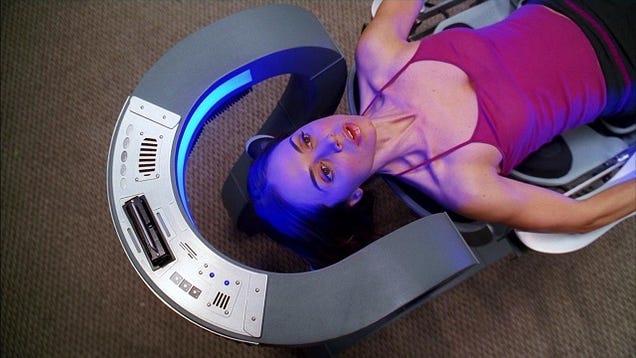
Back in the 1980s, there was an explosion of "repressed memories" by children who had suffered satanic abuse in schools, day cares, and family homes. The only problem was that most of these memories were iatrogenic, which means they were "implanted" by their therapists. Before the truth came out (that the majority of these memories were implanted by a small percentage of therapists, a lot of innocent people had their lives literally destroyed.
So what happened to those children and the "false memories" that were implanted in them? This brief article from io9 takes a look at that topic.
Are Implanted False Memories Permanent?
Esther Inglis-Arkell
July 10, 2014
The 1980s saw psychologists discovering a lot of "repressed" memories in patients. As it turned out, they weren't so much memories as inventions. Are all those patients stuck with false memories of Satanic abuse and alternate personalities forever?
In 1973, the book Sybil took the world by storm. A pioneering psychiatrist took a very troubled young woman under her wing. After a lot of therapy and a lot of drugs, she discovered that the eponymous Sybil had many alternate personalities. What was the source of these alternate personalities? Extended therapy revealed that Sybil's mind created them to deal with the horrific abuse she experienced at her mother's hands. As therapy continued, the doctor learned more about the abuse by uncovering memories repressed by Sybil's conscious mind for decades.
The problem is, neither the personalities nor the abuse ever existed. Later records show that Sybil was dependent on the doctor for money and drugs, and tried several times to tell her that she was making everything up. That didn't make it into the book, and it didn't make it into the public discourse. What stayed with people was the idea that they could be unhappy because of deeply repressed memories. A kind of medical entertainment industry flourished as people "remembered" abuse by family, friends, and most famously, Satanic cults. These memories became criminal trials, books, and movies. Eventually, the claims became too fantastic, the defendants got the right lawyers and fact checkers, and many of the most famous "repressed memory" stories went down in a hail of justified lawsuits.
Sybil knew she did not have multiple personality disorder, and she knew most of her "memories" were false. She had come to her psychiatrist as an adult, and had known her motivation for making up false memories. Many of the kids who had remembered "repressed memories" had no such background or context. People began wondering whether medical professionals had forced "memories" of abuse into children's minds, and whether those children would ever be able to remember their real life again.
There is no ethical way of studying the memory of children who have been encouraged to form false memories of extreme abuse, but there have been studies done on children who formed more innocuous false memories. The most famous false memory test was done under the direction of Elizabeth Loftus. Her study showed that people, including children, could have detailed and vivid memories of an event that had been made up and implanted in their heads. Most of the false events were innocuous, like seeing Bugs Bunny at Disneyland, when as a Warner Brothers character, Bugs would never be at Disneyland. One memory was only slightly darker. Participants would remember being lost in a mall until an elderly stranger helped them find their parent. Children between three and six, studies found, were especially susceptible to imagining that a story told to them was their own story.
One study rounded up a group of 22 children who had participated in a Loftus study, two years after the study was over. The researches found that children remembered their true memories about 78 percent of the time, but they only remembered about 13 percent of false memories. This isn't as dramatic a drop as it sounds. The first time around, the children remembered about 22 percent of false memories.
An overall review of studies done on children with false memories is less hopeful. Sometimes children clung to made-up events. How the memory came about was the key factor in whether or not it stuck around. Children who had spontaneously come up with false memories tended to forget them rather easily. Children who were implanted with false memories, who were prompted and guided into specific memories, tended to remember them even more persistently than they remembered real events. The significance, and repetition, of these implanted memories overshadowed the real world. So even if kids are told that they had been coached into remembering a false event, it did nothing to dull the memory.
[Via Long-term Survival of Children's False Memories, Are False Memories Permanent, Misinformation Effects.]
Further Reading

What disease did Sybil, the world's most famous multiple-personality patient, actually have?
Sybil, the book supposedly based on a real case study, made the concept of multiple personality… Read more
No matter how good your recall is, you still have false memories
There is a condition known as Highly Superior Autobiographical Memory, in which people can remember … Read more



No comments:
Post a Comment